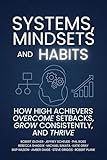Ever wonder what separates those who reach the peak of their potential from everyone else? It’s not just talent or luck. A significant part of the equation lies in understanding the psychology behind high achievers’ motivation. What drives them to push boundaries, overcome obstacles, and consistently strive for excellence? Let’s delve into the fascinating world of high-achiever psychology and uncover the secrets to their unwavering motivation.
Intrinsic vs. Extrinsic Motivation: The Fuel of Achievement
At the heart of high-achiever motivation lies a delicate balance between intrinsic and extrinsic factors. Intrinsic motivation stems from within – the pure joy of the activity itself, the satisfaction of mastering a skill, or the pursuit of a personal passion. Extrinsic motivation, on the other hand, comes from external rewards like money, recognition, or praise. While both can play a role, high achievers tend to be heavily driven by intrinsic factors. They find genuine fulfillment in the process, not just the outcome. Think of athletes who train relentlessly, not solely for the medal, but for the love of the sport.
The Power of Purpose: Aligning Actions with Values
High achievers often possess a strong sense of purpose. They have a clear vision of what they want to accomplish and why it matters to them. This purpose acts as a guiding star, fueling their motivation even when faced with setbacks. It’s not just about setting goals; it’s about connecting those goals to deeper values and beliefs. For example, a nutritionist might be driven by a deep-seated desire to help others improve their health and well-being.
Growth Mindset: Embracing Challenges and Learning from Failures
A key characteristic of high achievers is their growth mindset. Coined by psychologist Carol Dweck, this mindset emphasizes the belief that abilities can be developed through dedication and hard work. They see challenges as opportunities for growth, and failures as valuable learning experiences. This resilience allows them to persevere even when the going gets tough. They don’t shy away from pushing their limits, knowing that setbacks are simply stepping stones on the path to success.
Mastery, Autonomy, and Purpose: The Intrinsic Motivation Trifecta
According to Daniel Pink’s book “Drive,” three key psychological needs fuel intrinsic motivation: mastery, autonomy, and purpose. Mastery is the desire to get better at something that matters. Autonomy is the urge to direct our own lives. Purpose is the yearning to do what we do in the service of something larger than ourselves. High achievers tap into these needs, creating a powerful internal drive that propels them forward.
Goal Setting and Visualization: Mapping the Path to Success
High achievers are adept at setting specific, measurable, achievable, relevant, and time-bound (SMART) goals. They break down large aspirations into smaller, manageable steps, creating a roadmap for success. They also utilize visualization techniques, mentally rehearsing their desired outcomes to enhance motivation and boost confidence. Imagine a chef meticulously planning each step of a complex recipe, visualizing the perfect final dish.
 High Achiever Motivation
High Achiever Motivation
The Role of Feedback and Self-Reflection: Constant Improvement
High achievers don’t rest on their laurels. They actively seek feedback, using it as a tool for continuous improvement. They engage in self-reflection, analyzing their strengths and weaknesses to identify areas for growth. This constant learning and adaptation is crucial for staying motivated and reaching new heights. They are their own toughest critics, always striving to refine their skills and optimize their performance.
Building Resilience: Bouncing Back from Setbacks
The journey to achievement is rarely linear. High achievers inevitably encounter setbacks and challenges. However, what sets them apart is their resilience – their ability to bounce back from adversity. They view failures as temporary detours, not dead ends. They learn from their mistakes, adapt their strategies, and keep moving forward.
Cultivating a Positive Mindset: Focusing on Solutions
High achievers cultivate a positive mindset, focusing on solutions rather than dwelling on problems. They maintain a sense of optimism, believing in their ability to overcome obstacles. This positive outlook helps them stay motivated even during challenging times. They choose to see the silver lining in every cloud, turning setbacks into opportunities for growth.
Conclusion: Unleashing Your Inner High Achiever
Understanding the psychology behind high achievers’ motivation reveals a powerful combination of intrinsic drive, growth mindset, and resilience. While natural talent can play a role, it’s the cultivation of these psychological traits that truly sets high achievers apart. By embracing a growth mindset, aligning your actions with your values, and focusing on mastery, autonomy, and purpose, you can unlock your own potential and achieve extraordinary things. What steps will you take today to ignite your inner high achiever? Share your thoughts in the comments below!
- Moussavi, Maki (Author)
- English (Publication Language)
- Hardcover Book
- Sullivan, Dan (Author)
- Amazon Kindle Edition
- Plank, Robert (Author)
- Danielson, Bruce (Author)
- English (Publication Language)
- Amazon Kindle Edition
- King, Antoine Maurice (Author)
- Amazon Kindle Edition
- Burchard, Brendon (Author)
- Willard, Craig (Author)
- English (Publication Language)
- Amazon Kindle Edition
- Bennett , Michael T. (Author)










